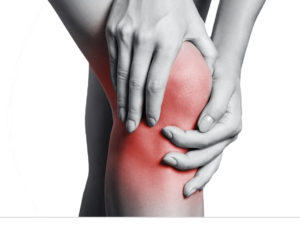Are hip exercises good for decreasing Knee pain?
CORE Physical Therapy In Omaha Explains…
By Dr. Mark Rathjen PT DPT CSCS
CORE Physical Therapy Co-owner
17660 Wright St. 9/10
Omaha NE
402-933-4027
Conclusion: The authors found no difference in short-term effectiveness in combining patient education with knee-focused exercise, hip-focused exercise, or free training for patients with PFP.
What does this mean to me?
Short term, all methods of treatment of hips, knee and proprioception are effective in short term situations. IN the long term other studies have show to decrease knee pain, ACL tear rates, and PFS in chronic pain athletes.
How can core help?
CORE can help with getting to the root cause of your knee pain, and facilitating a program to decrease risk of increased pain during the long haul. Once we determine what is causing the knee pain, we can fix the issue. Often the hip and ankle are the culprits to knee pain as the support the structure with a more complication movement pattern and degrees of freedom. Long story short, the ankle and hip are the support structure of the knee, and the knee itself is rarely injured long term with tendonitis without some degree of hip and ankle involvement .
C.O.R.E. Physical Therapy and Sports Performance PC,
17660 Wright St, Suites 9/10
Omaha, NE 68130
402-930-4027
CORE Physical Therapy is a small family owned business.
CORE Physical Therapy has no investors.
CORE Physical therapy runs completely independent.
CORE Physical Therapy competes against huge companies and Hospitals.
CORE Physical Therapy has won Best of Omaha, 2016, 2017, 2018, 2019, 2020, 2021.
CORE Physical Therapy has to be better than its competition to compete.
CORE Physical Therapy is different, Come see the CORE difference.
At CORE Physical Therapy in Omaha, We specialize in the treatment of athletes. We have worked with athletes for a combined 30 years. CORE was established in 2015 by Dr. Mark and Dr. Claire Rathjen is family owned and operated.
Proud winners of the Omaha Choice awards for 2016, 2017, 2018, 2019, 2020,2021
Expertise award winners 2018, 2019, 2020, 2021
Faces of Omaha Winners 2018, 2019, 2020, 2021
We are proud to serve the greater Omaha metro area; Gretna, Elkhorn, Papillion, Bellevue.
For More information, Please feel free to contact us http://coreomaha.com/contact/
Please feel free to follow us at https://www.facebook.com/COREomaha/
To get started http://coreomaha.com/getting-started/
For more Blog information http://coreomaha.com/blog/
Youtube Account linked below.
https://www.youtube.com/channel/UCVg8OSN5h-i1n_ykw1Gvahg?view_as=subscriber
Effectiveness of Isolated Hip Exercise, Knee Exercise, or Free Physical Activity for Patellofemoral Pain: A Randomized Controlled Trial
- PMID: 30958707
- DOI: 10.1177/0363546519830644
Abstract
Background: Exercise for patellofemoral pain (PFP) is traditionally knee focused, targeting quadriceps muscles. In recent years, hip-focused exercise has gained popularity. Patient education is likely an important factor but is underresearched.
Purpose: To compare 3 treatment methods for PFP, each combined with patient education: hip-focused exercise, knee-focused exercise, or free physical activity.
Study design: Randomized controlled trial; Level of evidence, 1.
Methods: A single-blind randomized controlled trial was performed with 112 patients who were 16 to 40 years old (mean, 27.6 years) and had a symptom duration >3 months (mean, 39 months) with a clinical diagnosis of PFP and no radiograph or magnetic resonance evidence of other pathology. Patients were randomized to a 6-week intervention consisting of patient education combined with isolated hip-focused exercise (n = 39), traditional knee-focused exercise (n = 37), or free physical activity (n = 36). The primary outcome was Anterior Knee Pain Scale (0-100) at 3 months. Secondary outcomes were visual analog scale for pain, Tampa Scale for Kinesiophobia, Knee Self-efficacy Scale, EuroQol, step-down, and isometric strength.
Results: There were no between-group differences in any primary or secondary outcomes at 3 months except for hip abduction strength and knee extension strength. Between-group differences at 3 months for Anterior Knee Pain Scale were as follows: knee versus control, 0.2 (95% CI, -5.5 to 6.0); hip versus control, 1.0 (95% CI, -4.6 to 6.6); and hip versus knee, 0.8 (95% CI, -4.8 to 6.4). The whole cohort of patients improved for all outcomes at 3 months except for knee extension strength.
Conclusion: The authors found no difference in short-term effectiveness in combining patient education with knee-focused exercise, hip-focused exercise, or free training for patients with PFP.
Registration: NCT02114294 (ClinicalTrials.gov identifier).
Keywords: anterior knee pain; education; exercise therapy; hip strengthening; patellofemoral pain.
Similar articles
-
Scand J Med Sci Sports. 2020 Apr;30(4):741-753. doi: 10.1111/sms.13613. Epub 2020 Jan 5.PMID: 31846113 Clinical Trial.
-
BMC Musculoskelet Disord. 2015 Feb 25;16:40. doi: 10.1186/s12891-015-0493-6.PMID: 25879452 Free PMC article. Clinical Trial.

